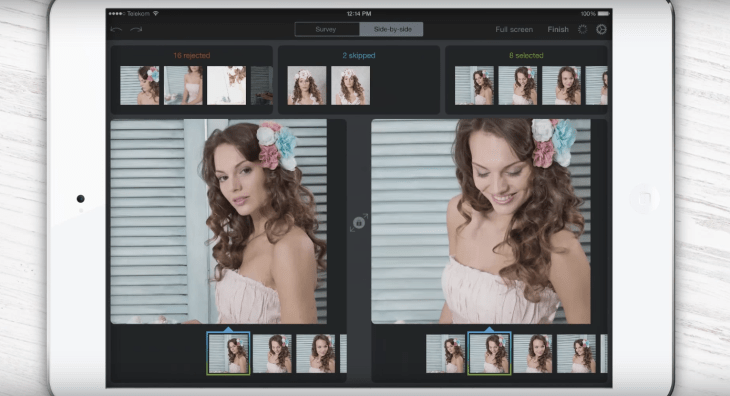The word AI is increasingly bandied about with notable abandon. And, as I like to say, AI is the promise that keeps on promising. So I’m always encouraged when I see a humble but viable use of artificial intelligence, even if just a few years ago we may have simply called the nascent technology machine learning. The latest example is Picturesqe, a tool for professional photographers that uses what the U.S./Hungary startup calls AI-powered automation to help pick out the best snaps and filter out the dross.
Features of the Windows app and Adobe Lightroom plugin (with a Mac version to follow shortly) include smart grouping, which automatically groups similar photos, intelligent zoom so that you can quickly compare the same spot on multiple shots, and the option to have Picturesqe pick out the best photos for you and delete the duds. And, of course, the software’s algorithms claim to get smarter based on an individual user’s feedback.
“The problem is that professional photographers take thousands of photos and have to spend countless hours to manually delete wrong shots and select the best ones,” Daniel Szollosi, founder and CEO of Picturesqe, tells TechCrunch. “Speed to market is a crucial factor, such as in live sports. And in other fields (e.g. weddings, events) dozens of pictures are very similar, so that the final selection becomes an expensive, time-consuming task.”
To that end, the software cuts selection time by automating the process, combined with a UI tailored exclusively for photographers. “Picturesqe automatically groups similar photos based on visual similarities, scores them based on aesthetics so that it offers a pre-ranked list of photos,” Szollosi says.
In addition, objectively bad photos (over or under exposed, blurry, etc.) are marked for deletion so that you don’t waste time having to manually review below-the-line shots.
As it stands, Picturesqe is aimed strictly at professional and semi-pro photographers, along with photo enthusiasts, which Szollosi describes as photographers using interchangeable lens cameras (DSLR). “[We’re] not targeting the casual or smartphone photographers for now, maybe at a later stage,” he says.
Meanwhile, the software is free to use for the first 3 months. After that there’s various subscription plans, ranging from $9.99 per month or $39 for 12 months if you’re willing to commit for a whole year.
